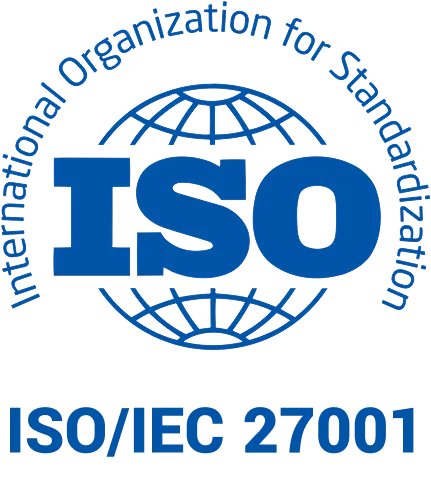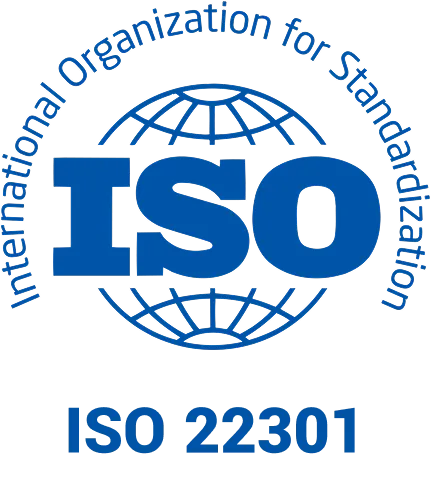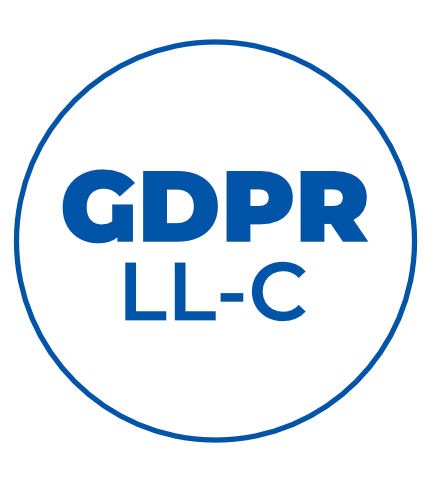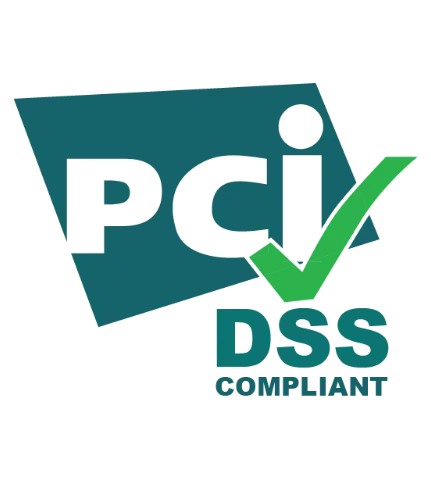
HR Process Optimization: Strategies, Tools & Savings 2025
HR process optimization represents a strategic approach to streamlining personnel operations that delivers measurable cost savings, reduced cycle times, and enhanced team efficiency. According to Gartner's July 2025 report, generative AI adoption in HR jumped from 19% in June 2023 to 61% in January 2025—showcasing the growing importance of technology in transforming HR functions. Optimization efforts encompass automation, process standardization, waste elimination, and leveraging advanced analytics to drive data-informed decision-making.
Foundations of HR Process Optimization
What HR Process Optimization Is and Why It Matters
HR process optimization involves comprehensively reviewing and improving all personnel activities—from recruitment and onboarding to compensation management and employee development. The primary goal is eliminating redundant tasks, shortening process completion times, and increasing organizational value. McKinsey research shows that data-driven HR practices can boost employee productivity by up to 25%. Benefits also include improved data quality, higher employee satisfaction, and the ability to shift HR resources from administrative tasks to strategic, developmental initiatives.
Key Objectives and Improvement Areas in HR Departments
Top optimization goals for HR focus on increasing departmental productivity, reducing costs, and improving employee experiences. Key improvement areas include: shortening time-to-hire, accelerating new hire onboarding, streamlining performance review systems, effective development planning, and optimizing compensation and incentive systems. McKinsey's HR Monitor 2025 reports that the job offer acceptance rate stands at just 56%, highlighting the need for optimized recruitment processes and stronger value propositions for employees. Companies using advanced HR KPIs can better monitor strategic personnel initiative progress and report effectiveness to leadership.
The Role of Human Resource Management in Optimization
Human resource management plays a strategic role in optimization, serving as the bridge between business objectives and operational efficiency. HR departments are responsible for analyzing change impacts on people and processes, designing communication strategies, securing training resources, and planning post-implementation support. Modern HR requires shifting from administrative tasks to strategic actions that support competency development, engagement building, and fostering a culture of continuous improvement. Deloitte's 2025 Global Human Capital Trends report found that over 70% of managers and employees are more likely to join and stay with organizations whose value proposition helps them thrive in an AI-driven world.
Automation as the Cornerstone of Modern HR
HR Process Automation: Examples and Applications
HR process automation spans a wide range of applications—from automatically sending forms to new hires post-recruitment, through payroll automation, to advanced training planning and talent management systems. Practical automation examples include: digitizing HR documents, auto-generating contracts and amendments, employee self-service systems (ESS), automated training schedules, and leave/delegation approval workflows. Gartner reports that organizations with high AI maturity are 45% more likely to sustain AI projects beyond 12 months. Automating repetitive tasks boosts team efficiency, allowing HR to handle more candidates and employees in less time.
HRM Systems and Their Impact on Operational Efficiency
HRM (Human Resource Management) systems are integrated platforms enabling comprehensive personnel process management—from employee data management, payroll, recruitment, and benefits, to training, talent management, and attendance tracking. Implementing an HRM system transforms traditional HR administrative functions into opportunities for increasing engagement, productivity, and business value. Key HRM benefits include: process standardization, elimination of human error, faster information access, better legal compliance, and the ability to generate advanced analytical reports. Industry research shows organizations using advanced HR analytics tools see measurable improvements in key personnel metrics, including retention and engagement.
HRIS, LMS, and Workflow Systems in Automation Context
An HRIS (Human Resource Information System) is a fundamental tool for managing information and standardizing HR tasks and processes while facilitating accurate documentation and reporting. HRIS enables more efficient interactions between employees and companies while integrating data across various HR processes like benefits, personnel management, payroll, and core HR tasks. LMS (Learning Management Systems) handle training, certification, and employee development—sometimes built into HCM systems, sometimes as standalone tools. Workflow systems automate approval and authorization paths, eliminating delays and ensuring decision process transparency. Platforms like Nais offer comprehensive solutions integrating various modules into one ecosystem, ensuring smooth information flow and reduced personnel process completion times.
Optimization Methods and Tools
Lean Management in HR: Eliminating Waste and Continuous Improvement
Lean Management in HR is a philosophy for developing employee engagement, competencies, and creativity, focusing on eliminating the eighth waste—lost employee creativity. Unlike traditional Lean Office, which focuses on improving processes performed by HR (like eliminating performance review errors), true Lean HR is oriented toward building employee engagement and development. Lean philosophy emphasizes value-added activities and eliminating everything unnecessary, saving time that can be redirected to other valuable activities. Key Lean Management principles in HR include: continuous process improvement (kaizen), identifying and eliminating waste (muda), engaging all employees in optimization, and focusing on root causes rather than symptoms.
HR Process Mapping: Identifying Bottlenecks and Critical Points
HR process mapping is a technique for visualizing information, operation, and decision flows in personnel processes, enabling identification of bottlenecks, steps requiring elimination, and duplicated activities. A properly prepared process map should reveal lower-capacity points, steps worth eliminating to shorten task completion times, and work possibly duplicated elsewhere. Value Stream Mapping captures work efficiency in broader context and serves to identify improvable areas. According to Dr. Eliyahu Goldratt's Theory of Constraints (TOC), every process has at least one bottleneck that's relatively easy to identify, and removing it improves overall process efficiency. In HR practice, bottlenecks may occur in recruitment (overly long candidate verification), onboarding (lack of standardization), or review systems (inefficient feedback procedures).
KPIs in HR: Measuring Optimization Effectiveness
KPIs (Key Performance Indicators) in HR are crucial efficiency metrics enabling quantification and comprehensive tracking of changes in personnel functions. HR KPIs cover various aspects of personnel work—from recruitment to employee development—and allow monitoring current personnel process realization to identify and eliminate significant goal deviations. Key KPIs worth monitoring include: retention (especially voluntary turnover), new hire time-to-productivity, absence and engagement levels, development plan completion, internal promotions, and recruitment vs. retention cost ratios. LinkedIn research shows replacing a mid-level employee costs 1.5 to 2 times their annual salary. Well-designed KPIs not only measure process efficiency but also forecast staffing needs, detect organizational risks, and enable strategic progress reporting on personnel initiatives.
HR Data Analytics as the Foundation for Optimization Decisions
HR Analytics forms the foundation for making informed optimization decisions in human resource management. Collecting and processing personnel process information enables understanding problem essence, evaluating alternative solutions, and communicating detailed requirements to subordinates regarding their work processes. Human capital value-added can be measured using the formula: [revenue - (operating costs - total employee costs)] / number of employees (FTEs). Advanced HRM and HRIS systems gather real-time data, enabling quick responses to deviations and proactive personnel risk management. McKinsey research shows data-driven HR practices outperform competitors in employee retention, engagement, and overall profitability.
Optimizing Key HR Processes
Recruitment and Selection: Reducing Time-to-Hire and Improving Fit
Recruitment and selection optimization focuses on shortening time-to-hire and improving candidate-to-organization fit quality. Recruitment process automation includes posting jobs, candidate tracking (ATS - Applicant Tracking System), interview scheduling, and managing the entire hiring process. Gartner reports that 88% of HR leaders admit their organizations aren't realizing value from AI investments, underscoring the importance of proper technology implementation and management. Key recruitment metrics to monitor include: time-to-hire, cost-per-hire, recruiting source quality, and offer acceptance rates. Platforms offering comprehensive HR solutions enable centralizing recruitment processes, especially internal recruitment, leveraging already-employed staff potential.
Onboarding: Accelerating Integration and Boosting Engagement
Onboarding automation reduces the time HR teams and employees must dedicate to administrative tasks—processes like document signing, form completion, and initial training assignment can be automated, speeding the entire integration process. Faster workplace adaptation stems from streamlined onboarding, providing new hires with all necessary information and tools in an organized, accessible way. Deloitte's 2025 report found two-thirds (66%) of managers and executives say most recent hires aren't fully job-ready, with lack of experience being the main issue. Automated onboarding tools offer features like: automated task checklists, integration schedules, personalized training paths, and virtual AI assistants supporting new employees in real-time. The primary onboarding goal is shortening the time new employees need to reach full productivity.
Performance Reviews: Streamlining Evaluation and Feedback Systems
Improving employee evaluation and feedback systems is crucial for HR process optimization, impacting engagement, competency development, and talent retention. Performance evaluation automation enables criteria standardization, subjectivity elimination, and organization-wide consistency. HR efficiency indicators in evaluation measure strategic goal achievement, such as reaching target retention levels, recruitment effectiveness, or employee satisfaction. Modern HRM systems offer Performance Management modules enabling continuous feedback, goal-setting per OKR (Objectives and Key Results) methodology, and ongoing progress monitoring. Deloitte's 2025 report shows nearly three-quarters (73%) of companies recognize how important modifying manager roles is for reviews and feedback, but only 7% are making significant progress. Effective evaluation systems should integrate with training and development systems to immediately translate identified competency gaps into concrete developmental actions.
Development and Training: Effective Career Path Planning
Effective career path planning requires using LMS (Learning Management System) platforms for conducting training, certification, and managing employee development. Training budget utilization metrics measure development investment efficiency and assess returns on competency enhancement spending. Training process automation includes: automatically assigning training based on competency gaps identified in evaluations, personalizing development paths according to role and experience level, and monitoring development plan completion. Deloitte's 2025 report states organizations should shift from rigid experience requirements to competency and potential-based hiring to close the growing gap between experienced worker needs and reality. HCM (Human Capital Management) systems transform traditional training functions into opportunities for increasing engagement, productivity, and business value through strategic planning and workforce development modeling.
Compensation Management: Optimizing Pay and Incentive Systems
Pay and incentive system optimization includes payroll automation, benefits management, and designing effective data-driven motivational programs. HRIS and HRMS systems enable integrated payroll management, eliminating human errors and ensuring legal compliance. Human capital value-added metrics assess whether compensation investments translate to productivity and revenue growth. Payroll automation includes: automatic salary component calculation, time tracking system integration, automatic payslip generation, and reporting to social security and tax authorities. Modern HRM systems also enable flexible compensation management, accommodating various work models (remote, hybrid, flexible hours) and diverse benefit systems tailored to different employee group preferences.
Non-Financial Motivation: Increasing Loyalty and Engagement
Non-financial motivation plays a key role in increasing employee loyalty and engagement, especially in combating the eighth waste—lost employee creativity. McKinsey research shows data-driven HR practices can boost employee engagement by up to 25%. Key non-financial motivation trends include: building trust, strengthening team resilience, supporting digital culture, and increasing productivity with people in mind. Lean Management principles in employee management leverage waste elimination at every stage—from hiring and onboarding through ongoing operations and task completion. Effective non-financial motivation programs should include: flexible work arrangements, development and internal advancement opportunities, wellness programs, achievement recognition and appreciation, and participation in decision-making processes. The Nais platform offers comprehensive employee recognition systems, including a benefits cafeteria with over 12,000 offers and a Kudos system for non-financial appreciation.
Supporting Processes and Best Practices
Internal Communication as an Element of Optimization Culture
Internal communication forms the foundation of continuous improvement culture and successful optimization change implementation in organizations. HR departments are responsible for designing communication strategies that ensure transformation goal transparency, build trust, and engage employees at all levels in the change process. In VUCA environments, HR processes support agility, promoting appropriate values and behaviors among organization members, including flexibility and openness to change. Effective internal communication requires using diverse channels—from traditional meetings and newsletters through intranet platforms to modern team communication tools like Slack or Microsoft Teams. Integrating change management with project management, supported by consistent communication, significantly increases implementation success chances. Leaders play a key role in change communication, modeling attitudes, building trust, and ensuring consistent optimization implementation at the daily work level.
HR Process Audit and Parametrization: How to Assess and Standardize Activities
HR process auditing is systematic examination and evaluation of all personnel activities to identify areas requiring optimization, standardization, and ensuring legal compliance and industry best practice alignment. Process parametrization involves determining key parameters (KPIs), time standards, quality standards, and control points enabling objective HR activity efficiency assessment. HR process mapping within audits captures work efficiency in broader context and serves to identify improvable areas. The audit process should include: analyzing key process completion times (recruitment, onboarding, reviews), verifying HR system data quality, assessing labor law compliance, and benchmarking against industry best practices. Per the Theory of Constraints, identifying and removing bottlenecks in HR processes improves overall human resource management system efficiency.
Working Time Management and Task Organization in HRM Systems
Working time management and task organization in HRM systems are key operational optimization elements enabling time waste elimination and productivity increases. Modern HRM systems offer work time registration, shift planning, leave and absence management modules, and payroll system integration. Leave and delegation approval workflow automation eliminates paper document circulation delays and ensures decision process transparency. Lean philosophy emphasizes value-added activities and eliminating everything unnecessary, saving time for additional valuable activities. HRM systems also enable flexible work organization models, accommodating various employment forms (remote, hybrid, flexible hours), which is especially important in VUCA environments requiring rapid adaptation to changing conditions. Platforms offering document and employee request digitization enable eliminating paper circulation and accelerating approval processes.
Challenges and Organizational Context
Change Management in HR: How to Effectively Implement New Solutions
HR change management is a comprehensive process of planning, implementing, monitoring, and embedding changes affecting personnel department and overall organizational functioning. Key change management stages include: implementation (action execution, training program launch, management support), monitoring (effectiveness measurement, problem identification, feedback collection), and change embedding (anchoring new practices in structures, systems, and organizational culture). HR departments have operational and strategic roles: analyzing change impacts on people, internal communication, designing training and adaptation programs, and supporting line leaders in team work. Deloitte's 2025 report shows nearly three-quarters (73%) of companies recognize how important modifying manager roles is for change, but only 7% are making significant progress. Change management primarily includes identifying change needs, analyzing organizational impact, establishing detailed plans, and post-implementation—monitoring results and progress plus assessing effectiveness.
The VUCA Environment and HR Process Flexibility
The VUCA (Volatility, Uncertainty, Complexity, Ambiguity) environment requires business leaders and HR departments to combine emotional resilience with systems thinking and rapid resource reorganization. Companies must not only invest in technology but also build flexible operating models, strengthen financial resilience, expand leadership competencies, and develop analytical and interpersonal skills among employees at all levels. Regarding personnel departments, agility manifests in employee- and candidate-centered approaches—ensuring recruitment speed while tailoring training to both company and employee developmental needs. HR processes support agility, promoting appropriate organizational member values and behaviors, including thinking and action flexibility plus rapid decision-making. In practice, leader flexibility means instantly switching work modes—from precise planning when data is complete to rapid solution prototyping when information is lacking.
Summary and Future Directions
Key Results from HR Process Optimization
HR process optimization delivers measurable financial and operational benefits. McKinsey research shows data-driven HR practices can boost employee productivity by up to 25%, and organizations using HR analytics outperform competitors in employee retention, engagement, and overall profitability. LinkedIn research shows replacing a mid-level employee costs 1.5 to 2 times their annual salary, highlighting the high value of optimization efforts aimed at improving retention. HR process automation offers time savings from reducing repetitive tasks, enabling teams to focus more on "soft" HR—investing time in employee development, process design, and implementing new strategies.
The Future of HR Optimization: Data Integration, AI, and Personalization
The future of HR process optimization will be dominated by advanced AI technologies that not only respond to deviations but also autonomously plan capacity and allocate resources. Gartner's July 2025 report shows generative AI adoption in HR jumped from 19% in June 2023 to 61% in January 2025—more than tripling in under two years. However, the same report notes 88% of HR leaders admit their organizations aren't realizing full value from AI investments, underscoring proper implementation and technology management importance. Deloitte's 2025 report found over half (52%) of leaders view deeper human-machine collaboration potential as very or critically important. AI-enabled personalization of onboarding paths, training, and development allows individual approaches to each employee, tailoring HR actions to specific roles and experience levels. Integrating data from various HR systems (HRIS, LMS, ATS) within HCM platforms enables holistic human capital management and decision-making based on comprehensive personnel, financial, and business data analysis.
To discover the specific savings achievable through HR process automation in your organization, check out the savings calculator, which provides preliminary estimates of financial benefits from implementing the Nais platform.
FAQ
What are the key benefits of HR process optimization?
HR process optimization delivers measurable financial and operational benefits. McKinsey research shows data-driven HR practices can boost employee productivity by up to 25%, and organizations using HR analytics outperform competitors in employee retention, engagement, and overall profitability. LinkedIn research shows replacing a mid-level employee costs 1.5 to 2 times their annual salary, underscoring retention-focused optimization value. HR teams can shift resources from administrative tasks to strategic activities like employee development, building organizational culture, and implementing new personnel strategies. Gartner reports organizations with high AI maturity are 45% more likely to sustain AI projects beyond 12 months.
How do you start the HR optimization process in an organization?
Start HR optimization with a comprehensive audit of existing processes, including value stream mapping, bottleneck identification, and key KPI analysis. Next, define optimization goals (e.g., shortening recruitment time, reducing costs, improving engagement) and establish implementation priorities. Also crucial are executive engagement, preparing communication strategies, and securing training resources for employees who'll use new solutions. Benchmarking against industry best practices is also valuable for assessing current efficiency levels in market context. McKinsey's HR Monitor 2025 notes HR teams effectively leveraging automation and AI can increase speed, scalability, and strategic impact of their actions.
Which KPIs matter most for assessing HR efficiency?
The most important HR KPIs include: retention (especially voluntary turnover), new hire time-to-productivity, absence and engagement levels, development plan completion, internal promotions, and recruitment vs. retention cost ratios. Human capital value-added measured by the formula: [revenue - (operating costs - total employee costs)] / number of employees assesses workforce productivity. HR efficiency indicators measure strategic goal achievement, such as reaching target retention levels, recruitment effectiveness, or employee satisfaction. McKinsey's HR Monitor 2025 reports the job offer acceptance rate stands at just 56%, highlighting the need for optimized recruitment processes and stronger value propositions. Well-designed KPIs not only measure process efficiency but also forecast staffing needs and detect organizational risks.
Can HR automation replace personnel department employees?
HR automation doesn't aim to replace personnel department employees but to relieve them of repetitive administrative tasks so they can focus on strategic actions and "soft" HR. By reducing repetitive tasks, recruitment needs decrease—individual HR staff can take on more responsibilities, resulting in optimal resource utilization. Deloitte's 2025 report shows leaders indicate AI should build HR employee competencies, not replace human perception and decision-making abilities. Automation enables HR teams to invest time in employee development, process design, building organizational culture, and implementing new strategies—delivering greater organizational value than routine administrative tasks. Gartner reports generative AI adoption in HR grew from 19% in June 2023 to 61% in January 2025.
How do you measure ROI from implementing an HR automation system?
Measure ROI (Return on Investment) from HR automation system implementation by comparing cost savings and efficiency gains with investment expenditures. Key ROI components include: labor time savings (saved hours × hourly labor cost), recruitment cost reduction (per LinkedIn, replacing a mid-level employee costs 1.5-2x annual salary), decreased turnover, and productivity increases (per McKinsey, data-driven HR practices can boost productivity 25%). McKinsey research shows organizations using HR analytics outperform competitors in employee retention, engagement, and overall profitability. Also consider intangible benefits like increased employee engagement, improved data quality, and enhanced job satisfaction. Platforms like Nais offer potential savings calculation tools at https://oszczednoscihr.pl/, providing preliminary financial benefit estimates from HR process automation.



























.jpg)








